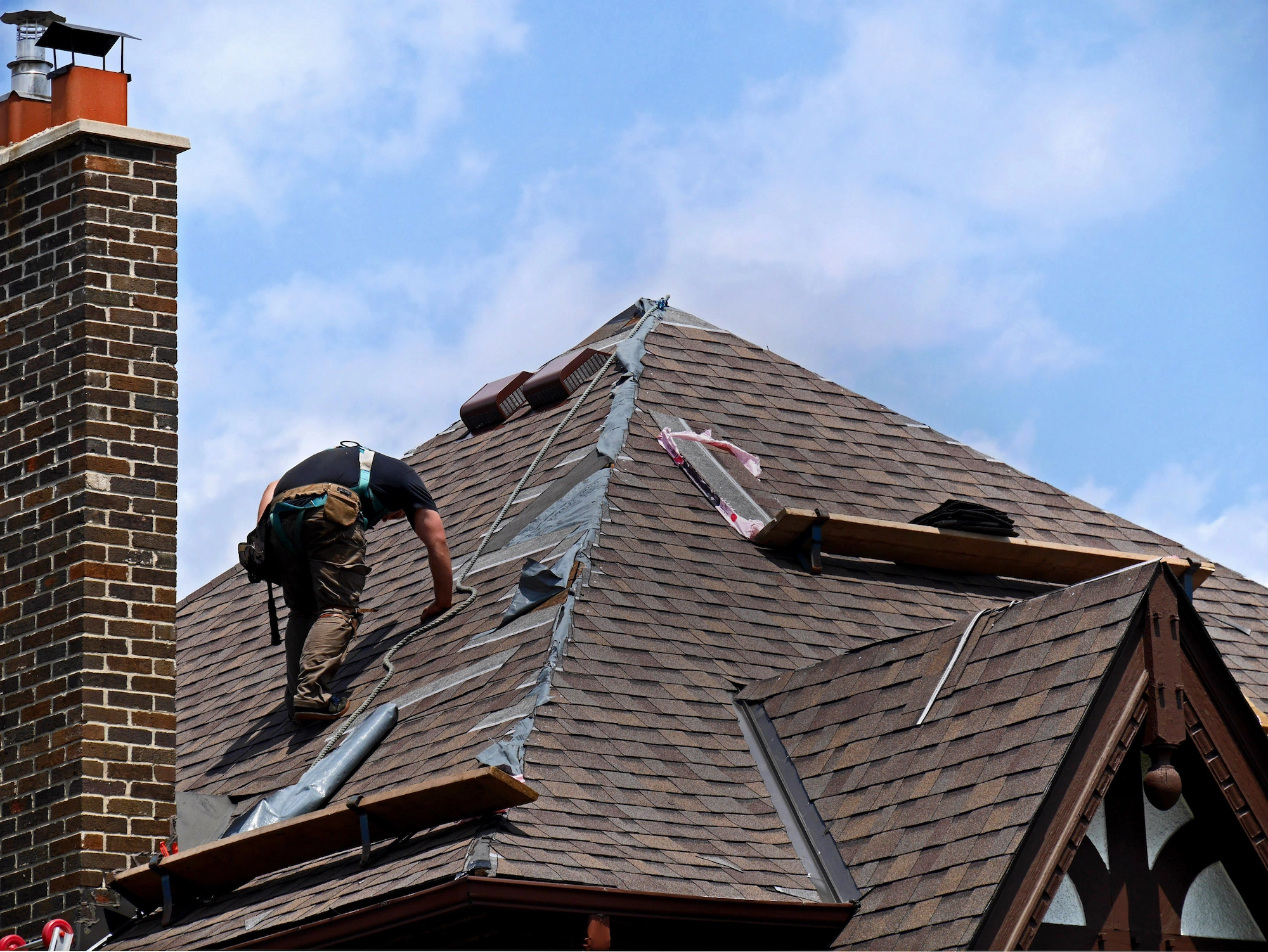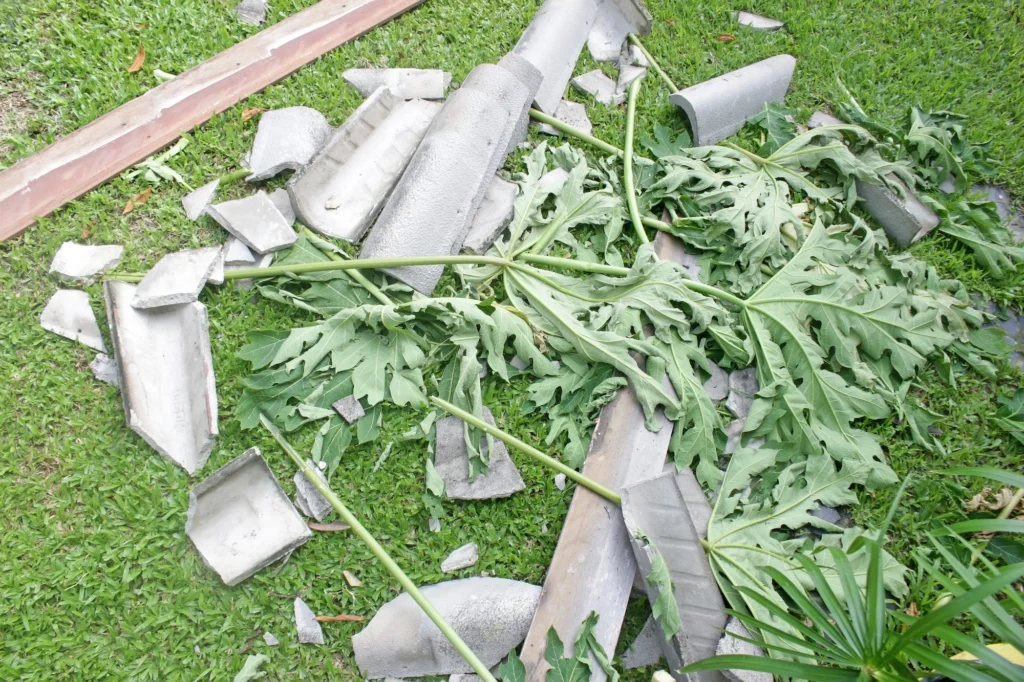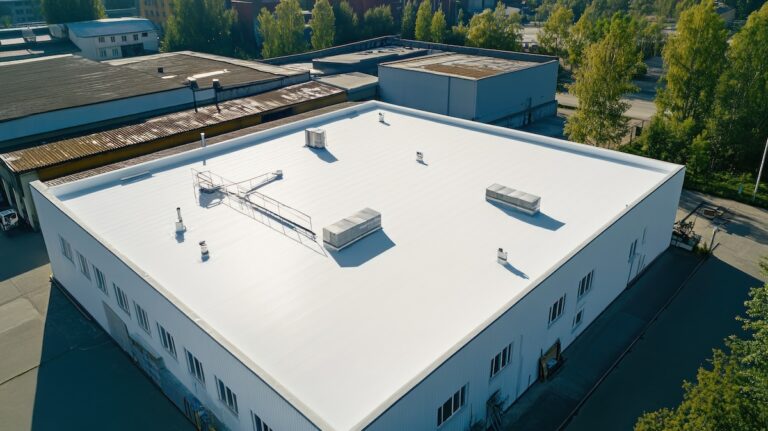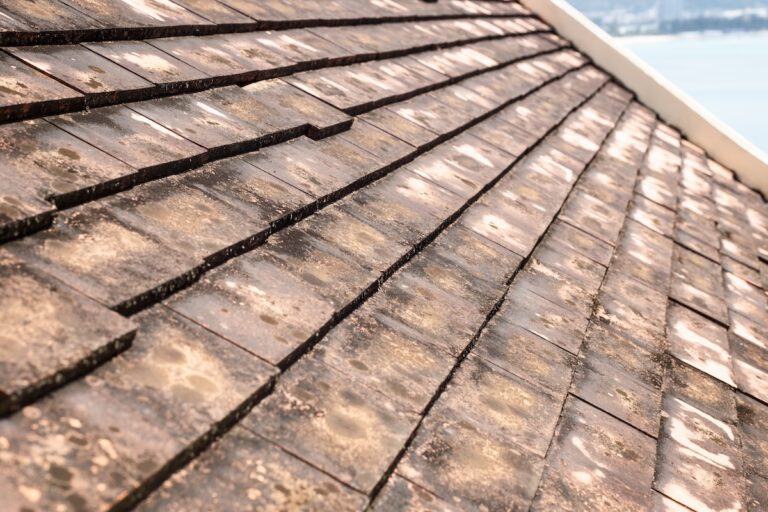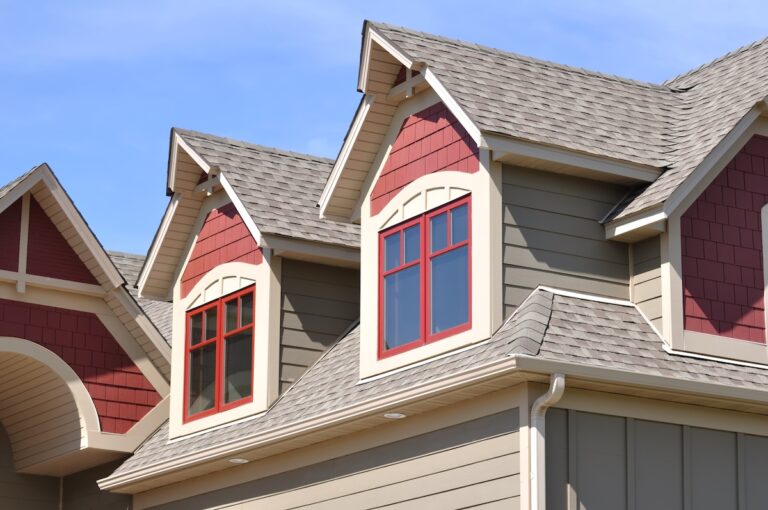Your roof is your shield against the elements, safeguarding your home and loved ones from:
- Rain 🌧️
- Wind 🌬️
- Snow ❄️
- Sunlight 🌞
However, over time, even the sturdiest roofs can suffer damage from various sources, compromising their integrity and leaving your home vulnerable.
Recognizing and addressing roof damage promptly is crucial to prevent further deterioration and costly repairs. In this guide, we’ll delve into the different roof damage types, how to identify them, their causes, temporary repair solutions, insurance coverage, and the cost of repairs.
Spotting Roof Damage
Detecting roof damage early can save you from significant headaches and expenses down the line. Here are some signs to watch out for:
- Missing or Damaged Shingles: Look for shingles that are cracked, curled, blistered, or missing altogether. These expose the underlying structure to moisture and can lead to leaks.
- Sagging Roof Deck: A sagging roof deck may indicate structural damage, such as rot or water infiltration, which requires immediate attention.
- Water Stains on Ceilings or Walls: Discoloration on interior ceilings or walls often indicates a leaky roof. Trace the source of the stain to identify the area of damage.
- Granule Loss: Check your gutters for an accumulation of granules, which may indicate deteriorating shingles.
- Damaged Flashing: Flashing around chimneys, vents, and skylights should be intact and free from corrosion or damage.
5 Types of Roof Damage and Causes
Roof damage can stem from various sources, including weather, age, poor installation, and lack of maintenance. Here are some common types of roof damage and their causes:
1) Weather Damage ⛈️
Heavy rain, wind, hail, snow, and extreme temperatures can all take a toll on your roof over time. Wind can lift and loosen shingles, while hail can cause dents and fractures.
2) Age-Related Wear and Tear 👴🏼
As roofs age, they become more susceptible to damage. Shingles may become brittle and crack, while flashing can deteriorate, leading to leaks.
3) Poor Installation 🔨
Improper installation techniques or substandard materials can compromise the integrity of your roof from the outset.
4) Vegetation and Debris 🌳
Overhanging tree branches can scrape against the roof during windy conditions, causing damage to shingles. Additionally, debris such as leaves and twigs can accumulate on the roof, promoting moisture retention and rot.
5) Animal Activity 🦝
Small animals like rodents and birds may gnaw or peck at roofing materials, leading to damage over time.
What to Do When You Discover Roof Damage
If you spot signs of roof damage, it’s essential to take prompt action to prevent further deterioration. Here’s what you should do:
- Document the Damage: Take photographs or videos of the damaged areas for documentation purposes. This will be valuable when filing an insurance claim or hiring a contractor.
- Schedule a Professional Inspection: Contact a reputable roofing contractor to assess the extent of the damage and provide repair recommendations. Avoid attempting to repair the roof yourself, as it can be dangerous without the proper expertise and equipment.
- Secure the Interior: If there are active leaks, place buckets or tarps to collect water and protect your belongings from water damage.
- Notify Your Insurance Provider: Contact your insurance company to report the damage and initiate the claims process. Provide them with any documentation or evidence you’ve gathered.
Temporary Roof Repairs
While waiting for professional repairs, you can undertake temporary measures to mitigate further damage. Here are some temporary repair solutions:
Tarping:
Use heavy-duty tarps to cover damaged areas and prevent water intrusion. Secure the tarp with nails or weights to keep it in place.
Temporary Patching:
Apply roofing cement or sealant to small cracks or holes to temporarily stop leaks.
Clearing Debris:
Remove any debris or vegetation from the roof to prevent additional damage.
Will Insurance Cover Roof Repairs?
Whether or not your insurance will cover roof repairs depends on several factors, including the cause of the damage, your policy coverage, and deductible. Here are some key points to consider:
- Perils Covered: Most homeowners insurance policies cover damage caused by perils such as fire, wind, hail, and falling objects. However, coverage for specific types of damage may vary depending on your policy.
- Exclusions: Some insurance policies exclude certain types of damage, such as wear and tear or neglect. Review your policy carefully to understand what is covered and what is not.
- Deductibles: You will be responsible for paying a deductible before your insurance coverage kicks in. Make sure you understand your deductible amount and how it applies to your claim.
- Claims Process: When filing a claim for roof damage, be prepared to provide documentation, such as photos, inspection reports, and repair estimates. Work closely with your insurance adjuster to ensure a fair and timely resolution.
Cost to Repair Your Roof
The cost of repairing a damaged roof can vary widely depending on the extent of the damage, the type of roofing material, and labor costs in your area. Here are some factors to consider:
- Extent of Damage: Minor repairs, such as replacing a few missing shingles, will be less expensive than extensive repairs or roof replacement.
- Roofing Material: The cost of materials varies depending on the type of roofing material used, such as asphalt shingles, metal, tile, or slate.
- Labor Costs: Labor costs can vary based on the complexity of the repair job, accessibility of the roof, and local labor rates.
- Additional Factors: Other factors that may affect the cost of repairs include the need for structural repairs, permits, and disposal of old roofing materials.
Call On G. Cannon For Your Repair Needs!
Your roof is a vital component of your home’s structure, and maintaining its integrity is essential to protecting your investment. By understanding the different types of roof damage, how to identify them, and what steps to take when damage occurs, you can effectively safeguard your home against the elements. Remember to prioritize safety and seek professional assistance when needed to ensure that repairs are done correctly and efficiently. With proper care and maintenance, your roof will continue to provide reliable protection for years to come.
Contact G. Cannon Roofing today to solve your roof damage once and for all!
